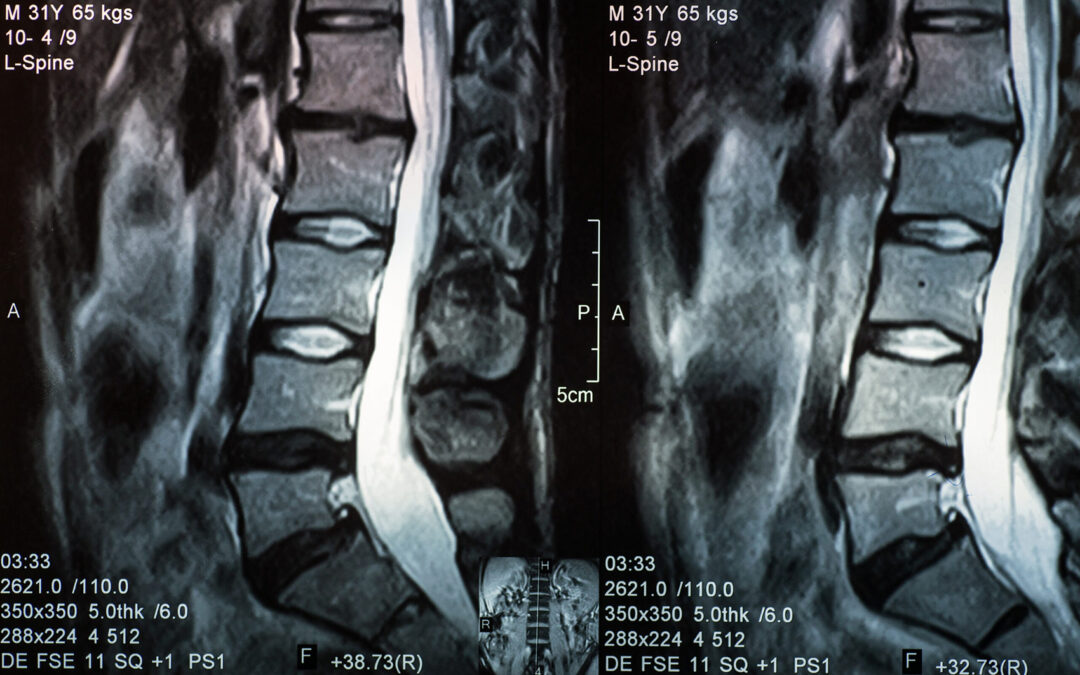Vertebral Compression Fracture (VCF) Imaging Reference (click to open PDF)
MRI Characteristics of Malignant vs. Benign Lesions (click to open PDF)
Imaging Modalities Quick Reference (click to open PDF)
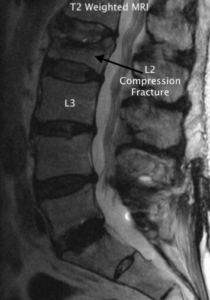
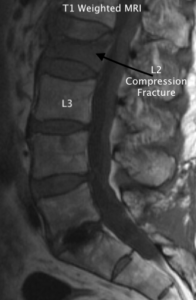
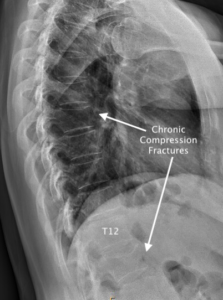
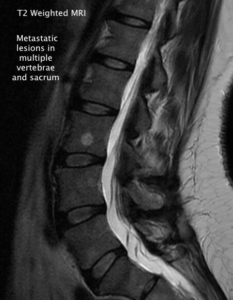
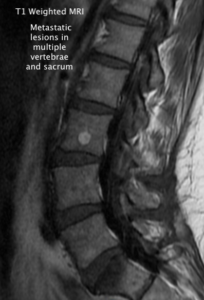
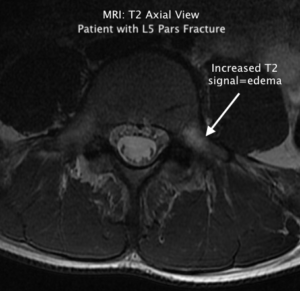
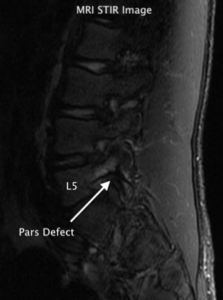
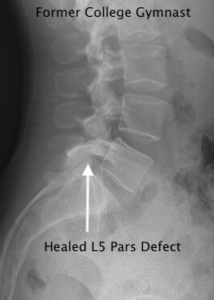
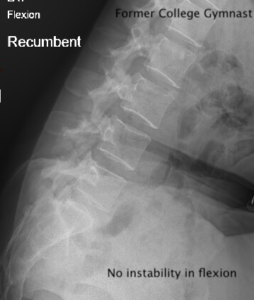
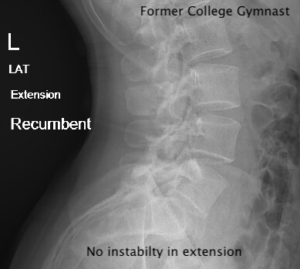
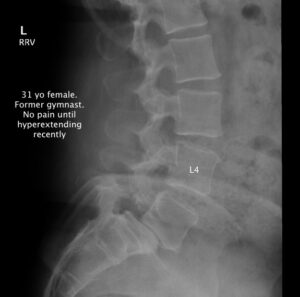
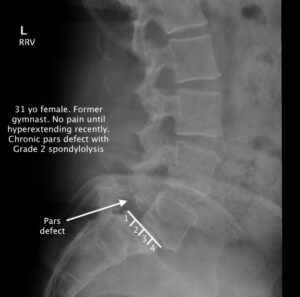
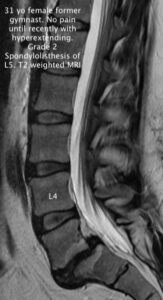

Goal: To have the chiropractor be confident when selecting advanced imaging procedures in daily clinical practice.
Objectives:
1) For the chiropractor to learn the most common causes, locations, and hallmark x-ray findings of compression fractures and spondylolysis.
2) For the chiropractor to know the benefits of X-ray, MRI, CT, and Ultrasound so they can properly select the most appropriate imaging modality in different scenarios in daily practice.
Course References
I. Imaging of Compression Fractures
1. Panda, et al. (May-June, 2014). Imaging of vertebral fractures. Indian Journal of Endocrinology and Metabolism.
2. Choi, W., et al. (2012). Usefulness of SPAIR image, fracture line and the adjacent discs change on magnetic resonance image in the actor osteoporotic compression fracture. The Korean Spinal Neurological Society.
3. Kim, C. et al. (2009). Enhancing box sign: Enhancement pattern of actor osteoporotic compression fracture. The Korean Neurosurgical Society
Hanrahan, C, Shah, L. (December, 2011). MRI of spinal bone marrow: part 2, t1-weighted imaging-based differential diagnosis. Integrative Imaging.
4. Hatgis, J, et al. (August 27, 2018). Radiologic evaluation of chronic vertebral compression fractures and role of vertebral augmentation. Cureus 10(8).
5. Mauch, JT, et al. (September, 2018). Review of the Imaging Features of Benign Osteoporotic and Malignant Vertebral Compression Fractures. www.ajnr.org
6. Sarli, M. (February 25, 2005). The vacuum cleft sign: an uncommon radiological sign. Epub.
II. Spondylolysis
1. Radswiki T, Knipe H, Tan W, et al. Spondylolysis. Reference article, Radiopaedia.org (Accessed on 26 Feb 2023) https://doi.org/10.53347/rID-12262
2. Yochum, T., Rowe, L., Essentials of Skeletal Radiology, Vol.1, pg.327-372, Williams & Wilkins, 1996.
III. Imaging Modalities in Daily Practice
1. Pate, D. (January 1, 2000). Obliques: Which foramen are we looking at? Dynamic Chiropractic Vol.18, Issue 01.
2. Panda, et al. (May-June, 2014). Imaging of vertebral fractures. Indian Journal of Endocrinology and Metabolism.
3. Choi, W., et al. (2012). Usefulness of SPAIR image, fracture line and the adjacent discs change on magnetic resonance image in the actor osteoporotic compression fracture. The Korean Spinal Neurological Society.
4. Yochum, T., Rowe, L., Essentials of Skeletal Radiology, Vol.1, pg.1-138, Williams & Wilkins, 1996.
5. Patel PR, De Jesus O. CT Scan. [Updated 2022 Jan 5]. In: StatPearls [Internet]. Treasure Island (FL): StatPearls Publishing; 2022 Jan-. Available from: https://www.ncbi.nlm.nih.gov/books/NBK567796/
6. Sippel S, Muruganandan K, Levine A, Shah S. Review article: Use of ultrasound in the developing world. Int J Emerg Med. 2011 Dec 7;4:72. doi: 10.1186/1865-1380-4-72. PMID: 22152055; PMCID: PMC3285529.
7. Stanley B Barnett, Gail R Ter Haar, Marvin C Ziskin, Hans-Dieter Rott, Francis A Duck, Kazuo Maeda, International recommendations and guidelines for the safe use of diagnostic ultrasound in medicine, Ultrasound in Medicine & Biology, Volume 26, Issue 3, 2000,Pages 355-366.
8. Stark DD. Clinical indications for MRI. Ann N Y Acad Sci. 1992 Mar 31;649:332-4. doi: 10.1111/j.1749-6632.1992.tb49621.x. PMID: 1580504.
9. Chung M, Dahabreh IJ, Hadar N, et al. Emerging MRI Technologies for Imaging Musculoskeletal Disorders Under Loading Stress [Internet]. Rockville (MD): Agency for Healthcare Research and Quality (US); 2011 Nov. (Comparative Effectiveness Technical Briefs, No. 7.)
10. Snyder E, Kashyap S, Lopez PP. Hepatobiliary Iminodiacetic Acid Scan. [Updated 2022 Jul 25]. In: StatPearls [Internet]. Treasure Island (FL): StatPearls Publishing; 2022 Jan.
Kyle Hagel, DC
Dr. Hagel has over 20 years of practice experience with a diverse practice background that includes Evaluation and Management of Auto Injuries, Functional Muscle Evaluation, Sports Medicine, Postural Reeducation, Structural Correction, Disc Injury Management, Spine and Extremity Bracing, Neuropathy Pain Management, Weight Loss, Functional Medicine, and Acupuncture. He also has benefitted greatly from working cooperatively with Physicians, Physician Assistants, and Nurse Practitioners in an integrated clinic for the last 14 years and continues to do so.
Educating patients has always been very important to Dr. Hagel in his practice. Patients that understand their condition make better decisions about their care. He is excited to now be involved in chiropractic continuing education and helping other doctors to do the same for their patients.
